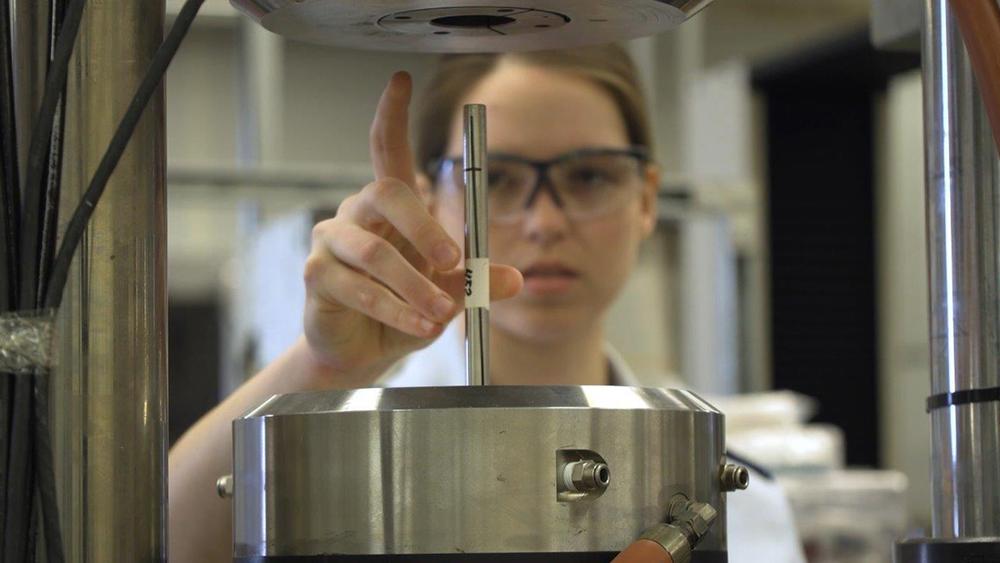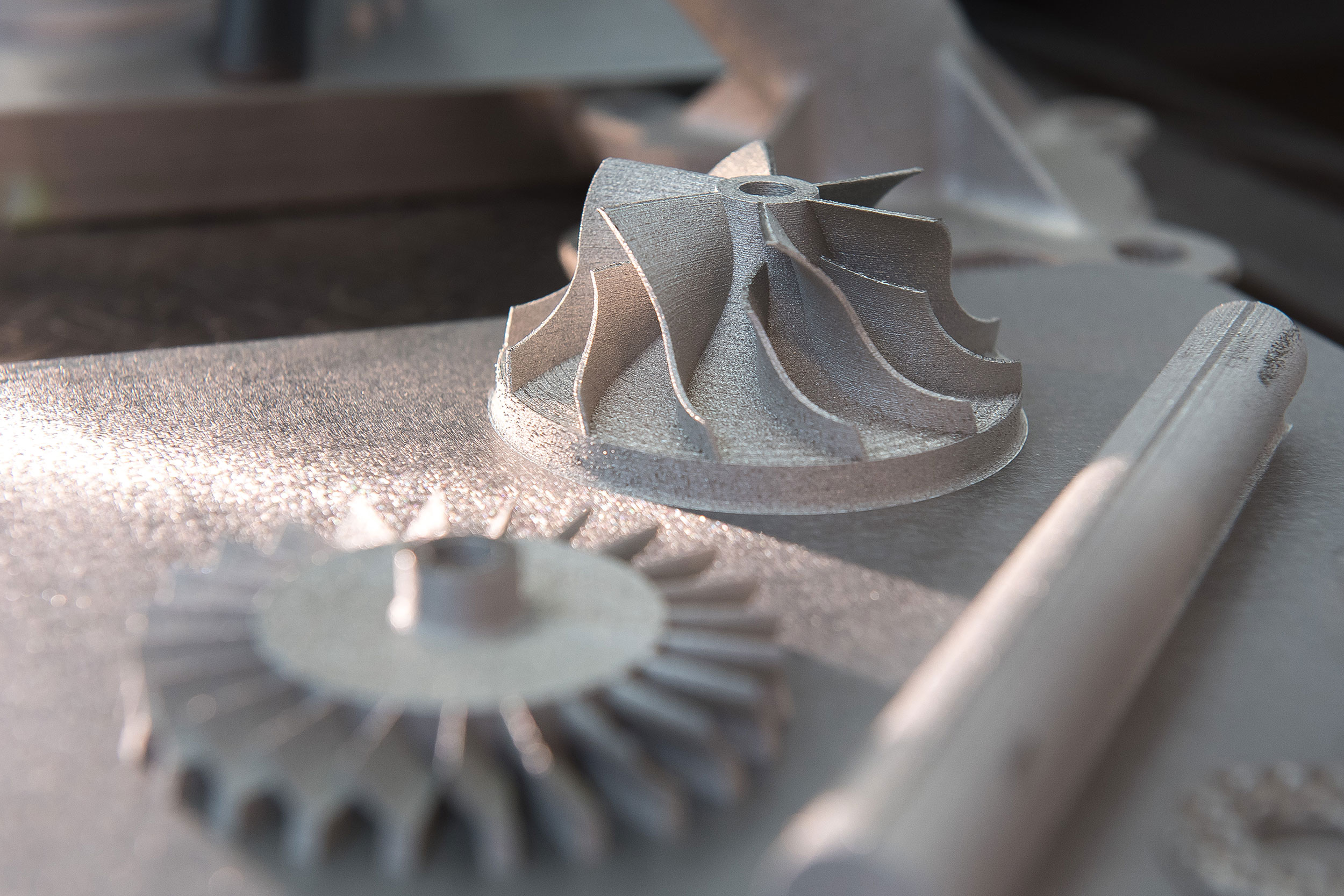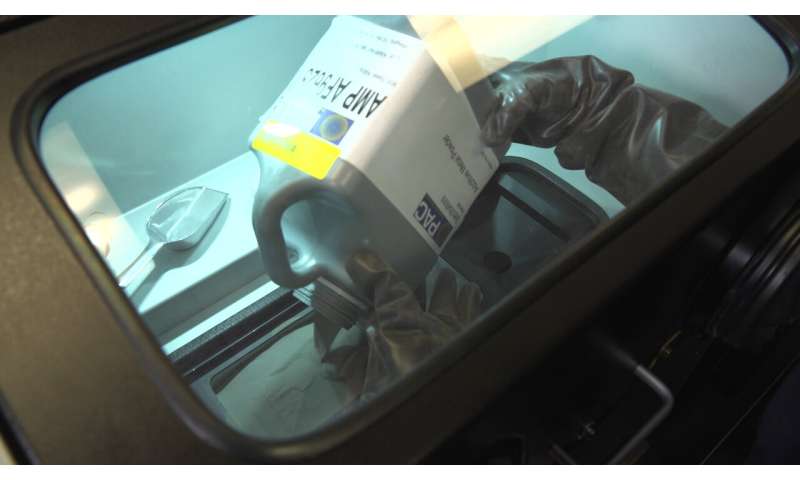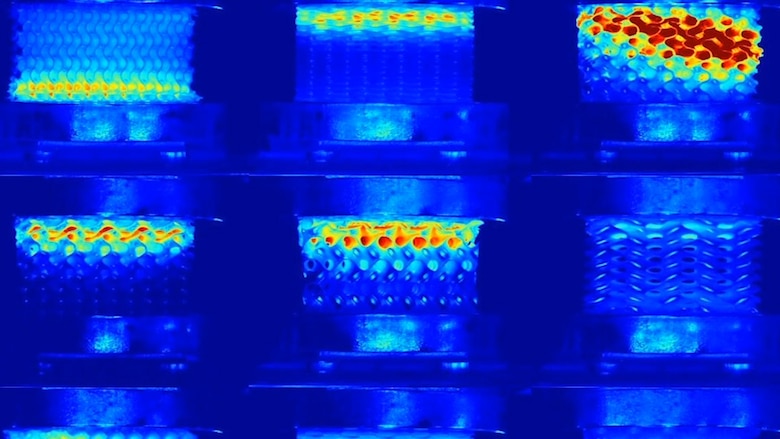The U.S. Air Force Institute of Technology (AFIT) has developed a method to 3D print high-performance Air Force steel AF-9628 for weapon applications.
Led by Captain Erin Hager, and sponsored by the Air Force Research Laboratory (AFRL) Munitions Directorate, this powder bed fusion (PBF) technique enables the production of steel exhibiting higher tensile strength than conventional AM alloys.
3D printed intricate projectiles were produced using this method and then tested, paving the way for lighter munitions.

Air Force grade steel AF-9628
Developed by AFRL’s Dr. Rachel Abrahams, AF-9628 is a steel alloy that offers high strength and toughness. Upon its initial development, AF-9628, was made to create bunker-busting bombs with the exact explosive profile desired. Compared to HP-9-4-20, a steel used in the Massive Ordnance Penetrator weapons system, the AF-9628 is unique as it does not contain tungsten.
Although the formula for AF-9628 is more expensive than common grades used in conventional munitions, it costs less than other high-performance steel alloys, including Eglin Steel and HP-9-4-20. For these attractive properties, especially its high strength, the research laboratory determined that AF-9628 is an optimal material for additive manufacturing.
3D printing is increasingly being integrated into the operations of military forces. Previously, the Air Force has utilised the technology to print low-cost replacement parts for legacy aircraft. In the U.S. Army, 3D printing has been employed to produce tools and spare parts on-demand. The U.S. Army Research Laboratory (ARL) have multiple programs for the technology’s advancement, including using Air Force steel alloy AF96 powder to 3D print high-strength spare parts for ground vehicles.

Powder bed fusion of steel alloys
Powder bed fusion of alloys has always been challenging. This is a result of certain alloys which do not melt and are prone to crack when forming into a part. In determining if AF-9628 was printable, Hager focused on first characterizing the shape and size of the powder, then investigated and identified how it changed with melting and sieving.
Examinations were done under a scanning electron microscope at AFIT. Later, the University of Dayton Research Institute carried out performance tests using a size characterizing light microscope. Once Hager determined that the metal powder melted predictably in the machine, actual test articles were created. After 3D printing various parts, Hager analyzed the resulting porosity, strength and impact toughness.
To Hager’s surprise, her 3D printed alloy parts exhibit good mechanical performance with no evidence of cracking. The required 10% elongation was met, indicating increased strength without becoming brittle. The output is in fact very similar to conventionally forged and heat-treated AF-9628 parts.

Additively manufacturing munitions
After successfully 3D printing simple parts, more complex designs such as several intricate projectiles were attempted. Using two machines at AFIT, Hager 3D printed about 130 articles, including 30 small cylinders, 60 larger cylinders, 20 tensile bars and 20 impact specimens.
The parts Hager made are suitable for weapon applications. Although the tested roughness and porosity were not ideal in functional parts, the properties were noted to suit components for munitions which are single-use items. Results also showed that parts additively manufactured with AF-9628 are about 20% stronger than conventional AM alloys in terms of ultimate tensile strength.
Additive manufacturing allows weapon engineers to put weight on munitions only where it’s needed. According to Hager, this ultimately “enables lighter munitions that get just as deep, so aircraft can carry more of these weapons.” Presently, the AF-9628 powder is only available in very small production quantities.
Further research efforts involving 3D printed munitions are now led by AFRL’s Munitions Directorate. Currently, the directorate aims to create munitions with precision-controlled fragmentation and blast pressure profiles that minimise collateral damage.

Subscribe to the 3D Printing Industry newsletter for the latest news in additive manufacturing. You can also follow us on Twitter and like us on Facebook.
Looking for a career in additive manufacturing? Visit 3D Printing Jobs for a selection of roles in the industry.
Featured image shows Capt. Erin Hager analysing the resulting porosity, strength and impact toughness of AF-9628 powder. Photo via Air Force Institute of Technology.


